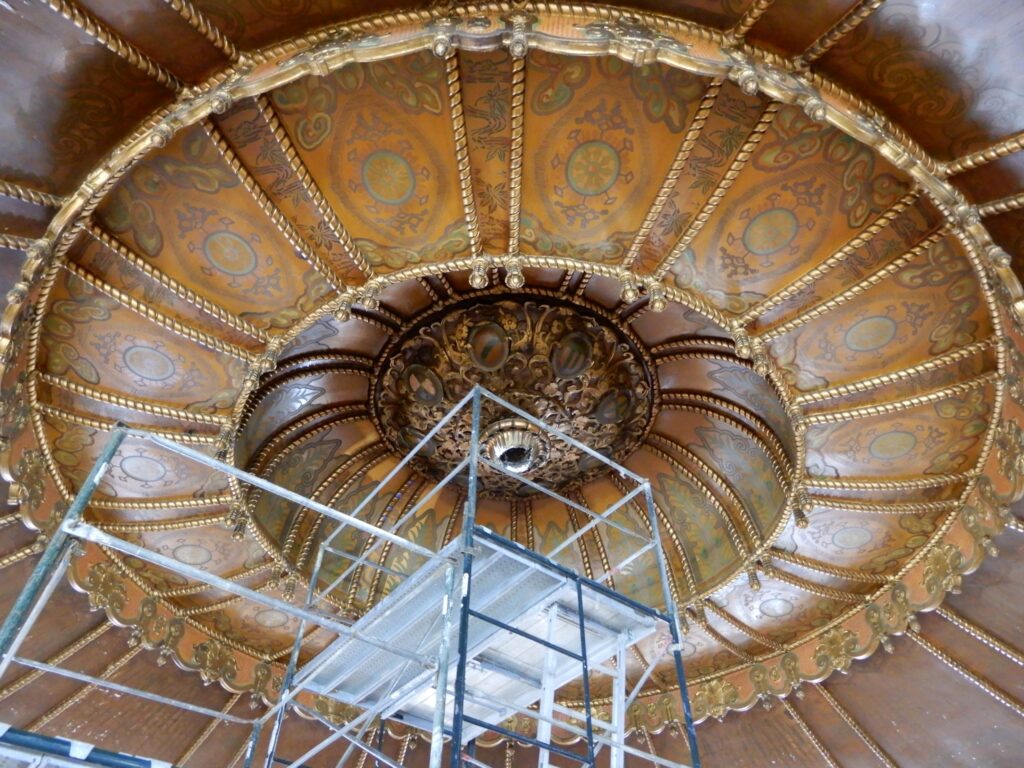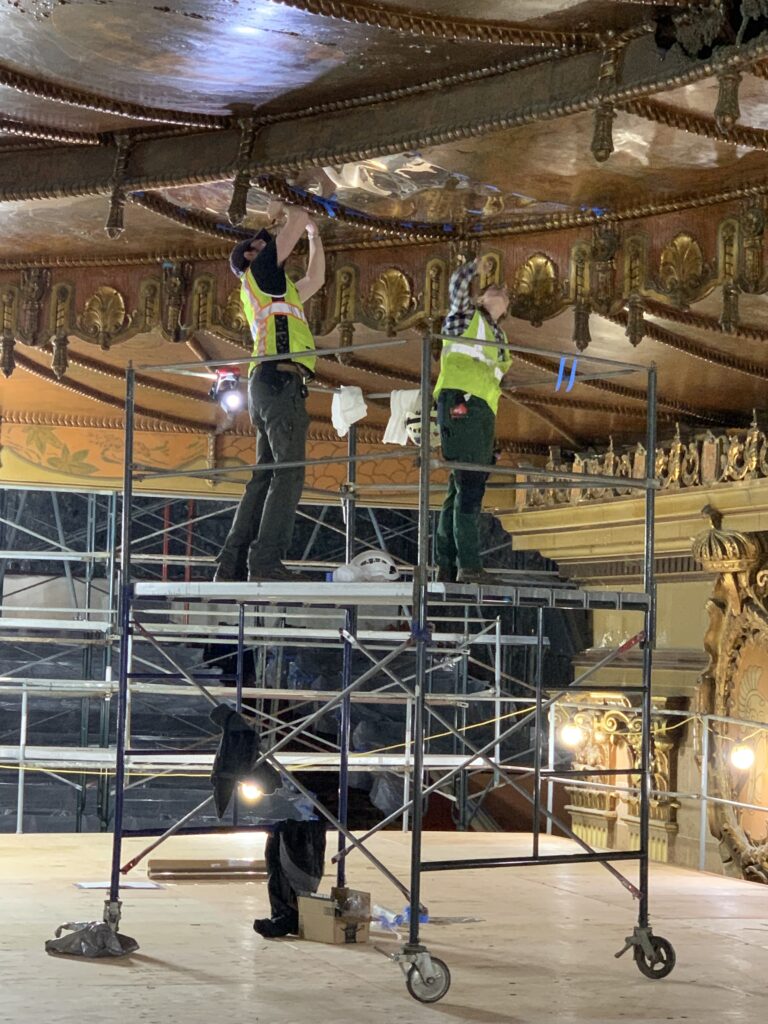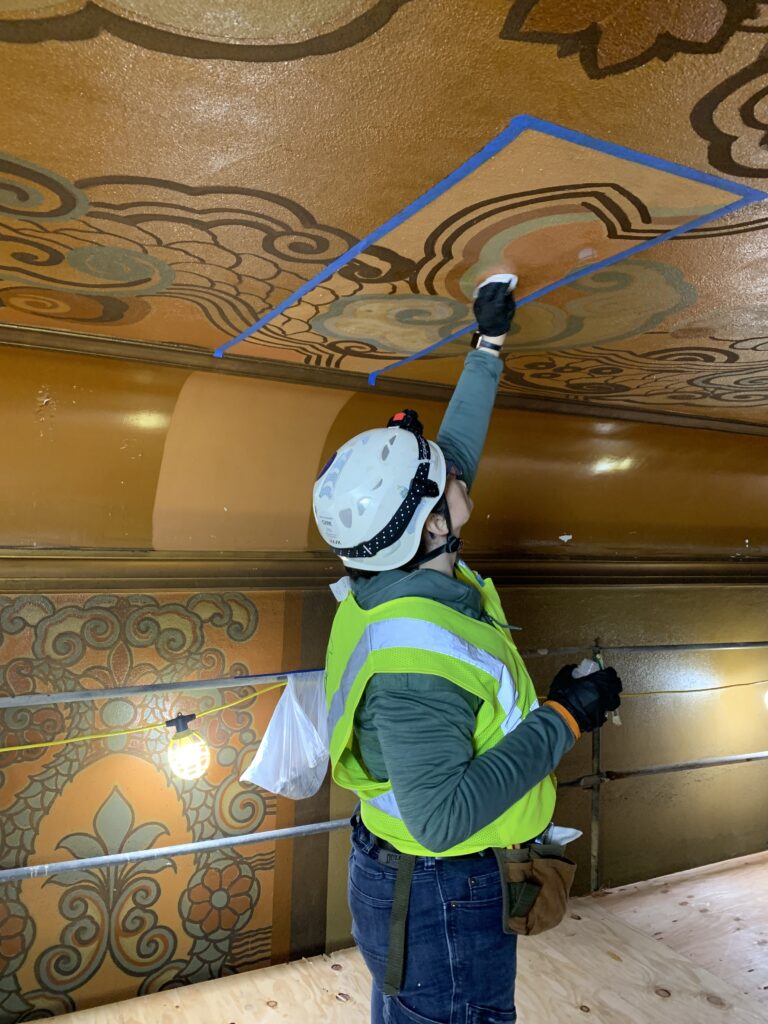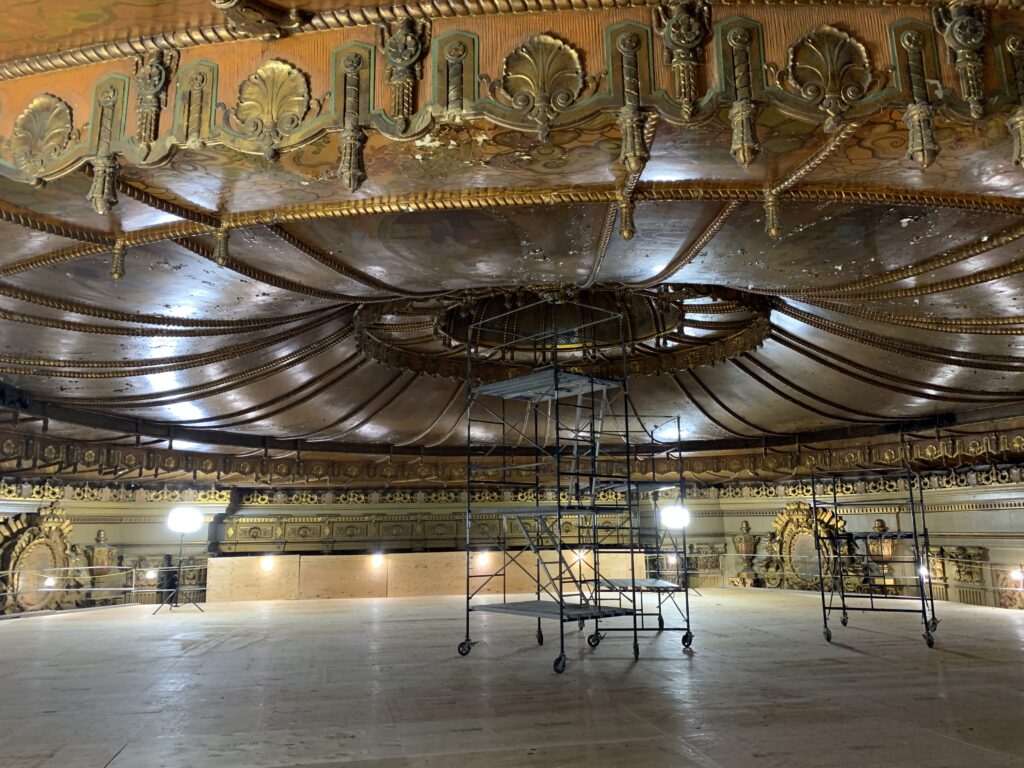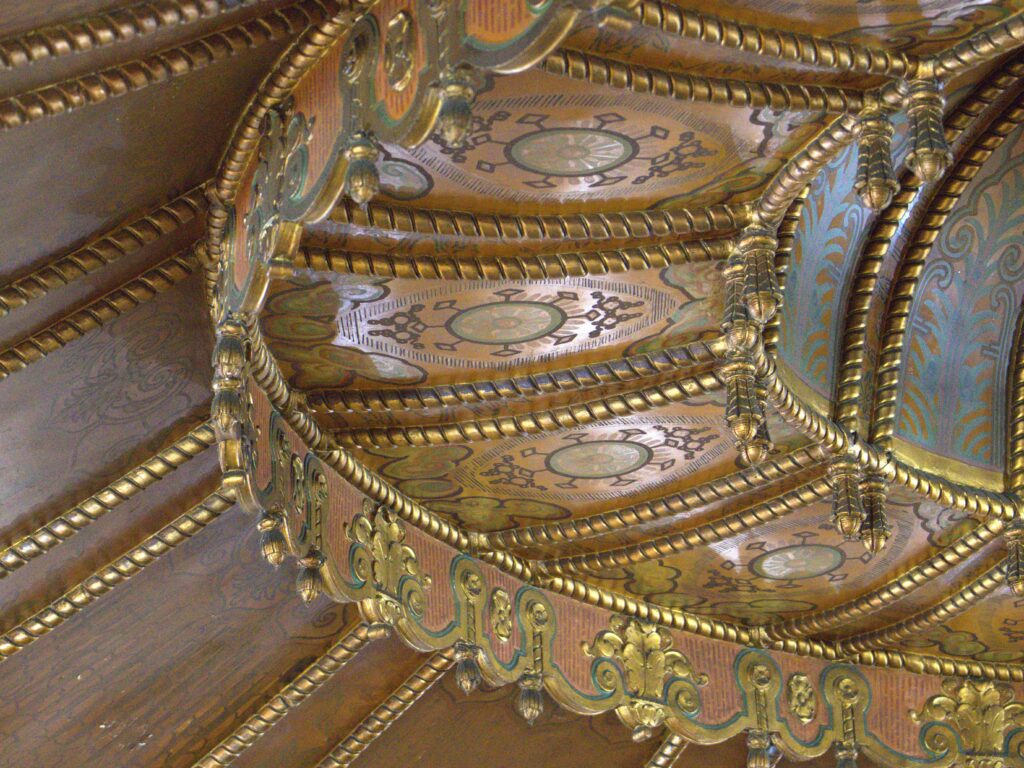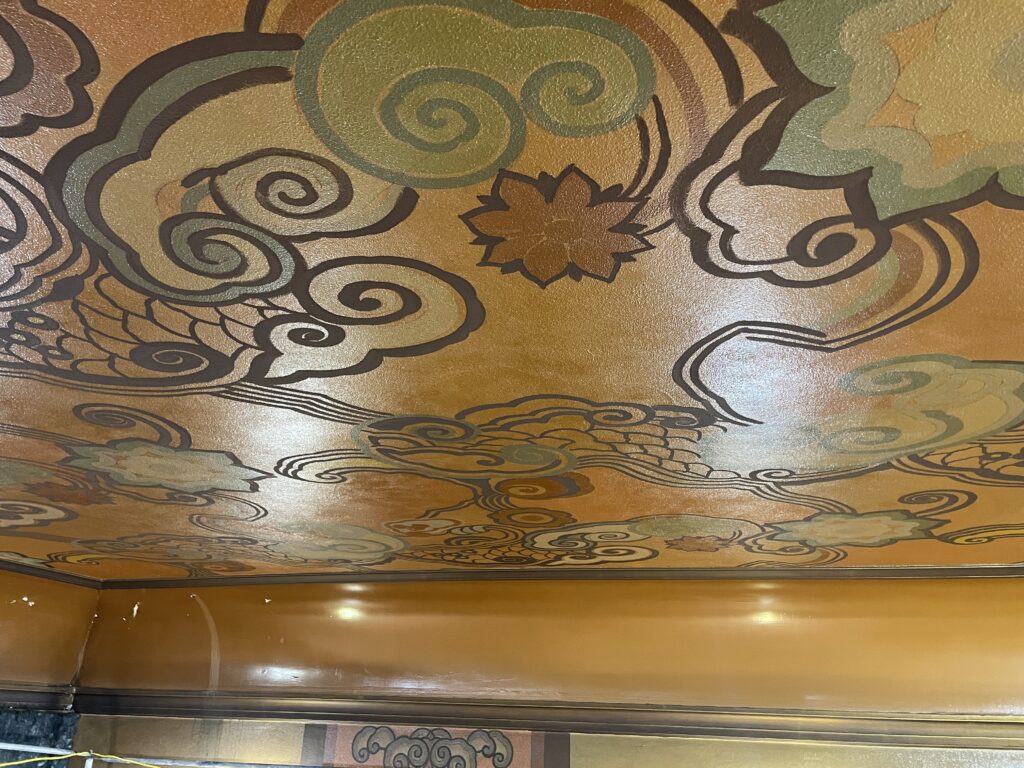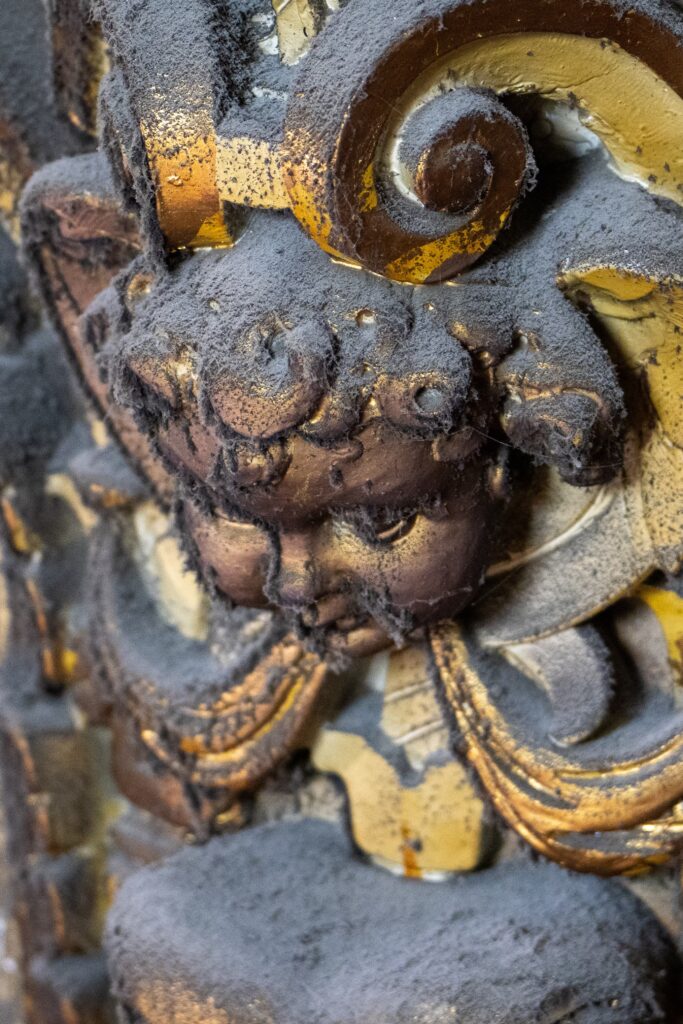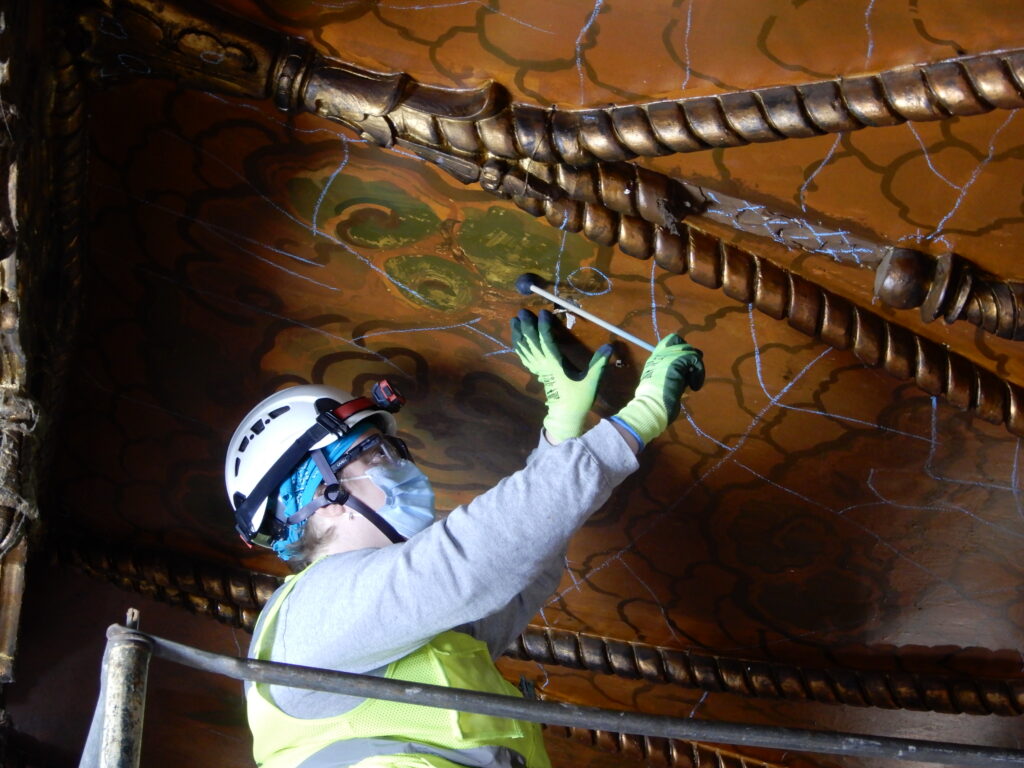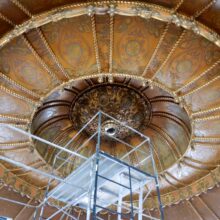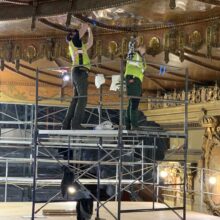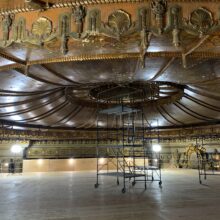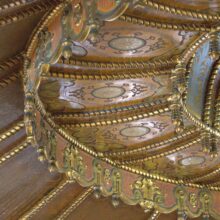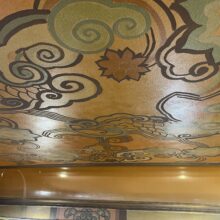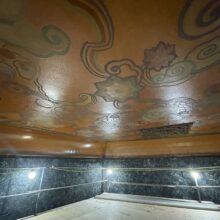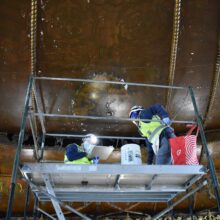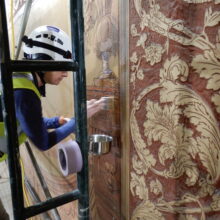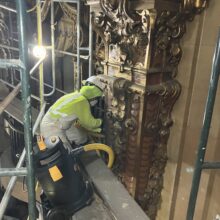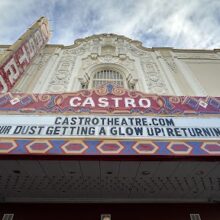Castro Theatre
The Castro Theatre, located in the Castro neighborhood of San Francisco, was commissioned by the Nassar brothers to replace their 1910 nickelodeon of the same name. Completed in 1922, the movie theatre was designed by self-taught architect Timothy L. Pflueger, a prominent San Francisco architect known for the Alhambra Theatre, the El Ray Theatre, the Four Fifty Sutter Building. The facade is of Churrigueresque design, with the interior decoration showing Italian, Oriental, and Spanish influences. In 1937, a small fire destroyed the original auditorium chandelier and cause some minor damage to the space. Pflueger was brought back to not only design a new chandelier, but to update the interior in the Art Deco style, for which he is well known.
In the 1950s and 60s the Castro neighborhood became a haven for the LGBTQ+ community; the Castro Theatre became a sacred space which provided a safe place to gather, socialize, and be a part of the community. In 1976 theatre was recognized for its importance to the LGBTQ+ community when it was designated a San Francisco City Landmark; the designation protected both the exterior and interior, which is uncommon and showed the importance of the interior to the community. The theatre ran until the 2020 COVID-19 pandemic forced the Castro to go dark.
The theatre finishes have sat mostly untouched for decades, leaving the interior finishes covered with years of cigarette smoke residue, dust, and grime. In 2022, a new partnership between Bay Properties and Another Planet Entertainment was formed to reopen the theatre with a focus on live performances in addition to films and other events; the restoration of the interior being a major part of that plan.
EverGreene is collaborating with Page & Turnbull to perform restoration work on the decorative and plaster finishes in the auditorium in advance of the construction work at floor level. Our conservators performed a preliminary finishes investigation in 2019, followed by a series of cleaning tests, color matching investigations, and an overall plaster survey in early 2024. The goal of the work was to determine methods of treatment which would conserve as much of the original historic fabric as possible, with the goal of reinstating a unified decoration corresponding to Pfleuger’s 1937 design.
Restoration work began in earnest by EverGreene conservators and skilled technicians in late March 2024 and is estimated to take approximately six months.
